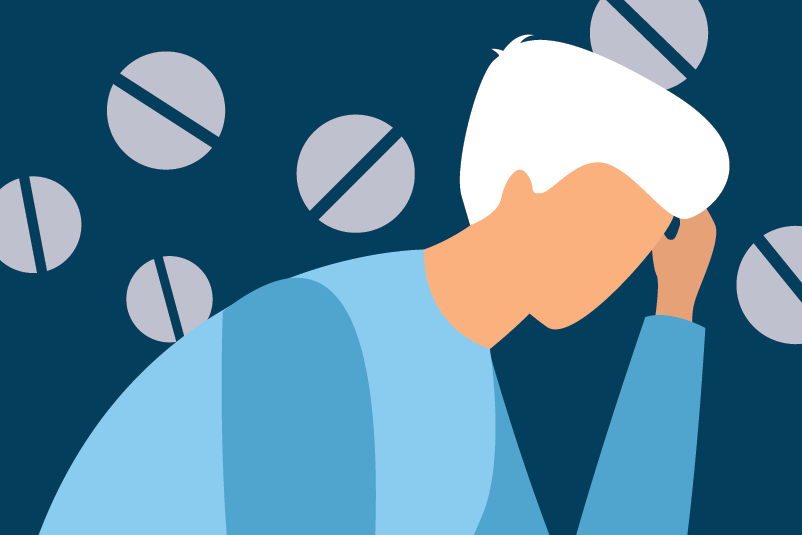#253 Pharmacologic management of alcohol use disorder: worth a shot?

Reading Tools for Practice Article can earn you MainPro+ Credits
Join NowAlready a CFPCLearn Member? Log in
- Systematic review of randomized, controlled trials (RCTs) of 12-52 week treatments, most included supportive therapy and required detoxification. Results versus placebo:1
- Return to any drinking:
- Acamprosate (16 RCTs, 4847 patients) most common dose 666mg three times per day:
- 76% versus 83% placebo.
- Number needed to treat (NNT)=12.
- 76% versus 83% placebo.
- Oral naltrexone (16 RCTs, 2347 patients) 50mg daily:
- 63% versus 68% placebo.
- NNT=20.
- 63% versus 68% placebo.
- No difference with injectable naltrexone (2 RCTs, 939 patients) or disulfiram (2 RCTs, 492 patients).
- Acamprosate (16 RCTs, 4847 patients) most common dose 666mg three times per day:
- Return to heavy drinking:
- Oral natrexone (19 RCTS, 2875 patients) 50mg daily:
- 46% versus 54% placebo.
- NNT=13.
- 46% versus 54% placebo.
- No difference with acamprosate (7 RCTs, 2496 patients).
- Oral natrexone (19 RCTS, 2875 patients) 50mg daily:
- Earlier systematic reviews of acamprosate2 and naltrexone3 reported similar results.
- Evidence insufficient or of no benefit for acamprosate or naltrexone on mortality1,4,5 or quality of life.1
- Most common adverse effects:
- Naltrexone:3,5
- Nausea: 26% versus 16% placebo number needed to harm (NNH)=10.
- Sleepiness: 21% versus 16% placebo, NNH=20.
- Acamprosate:4
- Diarrhea: 16% versus 10% placebo, NNH=17.
- Incidence decreases after first four weeks of treatment.
- Naltrexone:3,5
- Return to any drinking:
- Guidelines suggest first line pharmacotherapy include acamprosate for abstinence or naltrexone for a goal of reduced drinking or abstinence. They also provide practical tips for their use.6
- Limited evidence has evaluated naltrexone on an “as needed” basis. It may reduce alcohol consumption when used as cravings arise or prior to expected drinking.7
- Supportive interventions including brief interventions in primary care may benefit 1 in 10 individuals with excessive alcohol intake.8
- If patients do not respond to approved medications, trial of alternative medications (example topiramate, gabapentin) may be reasonable.6






